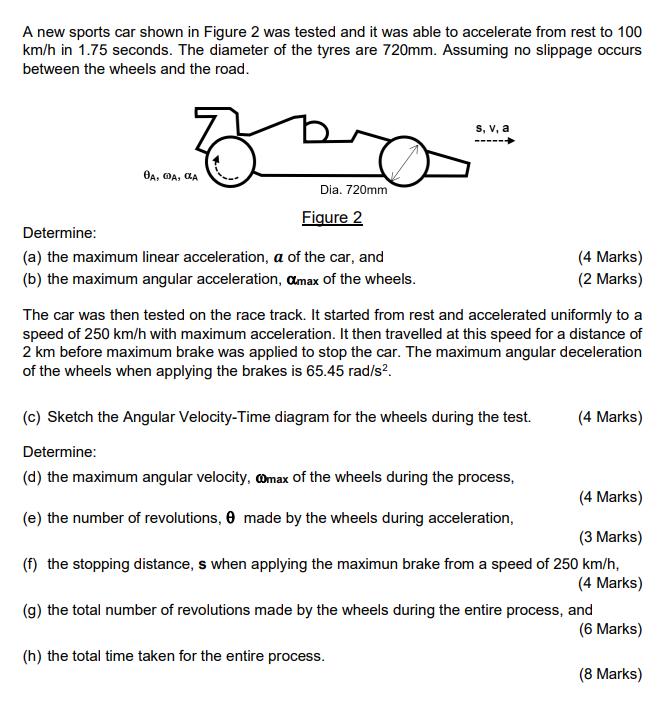Answered step by step
Verified Expert Solution
Question
1 Approved Answer
A new sports car shown in Figure 2 was tested and it was able to accelerate from rest to 100 km/h in 1.75 seconds.

A new sports car shown in Figure 2 was tested and it was able to accelerate from rest to 100 km/h in 1.75 seconds. The diameter of the tyres are 720mm. Assuming no slippage occurs between the wheels and the road. 8 BA, @A, CA Dia. 720mm Figure 2 Determine: (a) the maximum linear acceleration, a of the car, and (b) the maximum angular acceleration, amax of the wheels. s, v, a (4 Marks) (2 Marks) The car was then tested on the race track. It started from rest and accelerated uniformly to a speed of 250 km/h with maximum acceleration. It then travelled at this speed for a distance of 2 km before maximum brake was applied to stop the car. The maximum angular deceleration of the wheels when applying the brakes is 65.45 rad/s. (c) Sketch the Angular Velocity-Time diagram for the wheels during the test. Determine: (d) the maximum angular velocity, max of the wheels during the process, (e) the number of revolutions, made by the wheels during acceleration, (4 Marks) (4 Marks) (3 Marks) (f) the stopping distance, s when applying the maximun brake from a speed of 250 km/h, (4 Marks) (g) the total number of revolutions made by the wheels during the entire process, and (6 Marks) (h) the total time taken for the entire process. (8 Marks)
Step by Step Solution
★★★★★
3.52 Rating (159 Votes )
There are 3 Steps involved in it
Step: 1
Solving the Sports Car Problem Given Diameter of tyre d 720 mm 072 m Acceleration from rest to 100 kmh 2778 ms in 175 seconds a No slippage between wh...
Get Instant Access to Expert-Tailored Solutions
See step-by-step solutions with expert insights and AI powered tools for academic success
Step: 2

Step: 3

Ace Your Homework with AI
Get the answers you need in no time with our AI-driven, step-by-step assistance
Get Started


